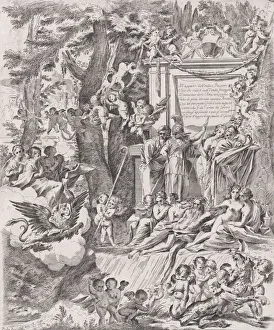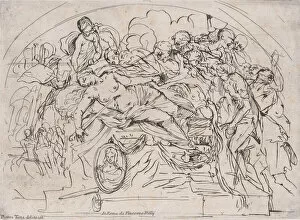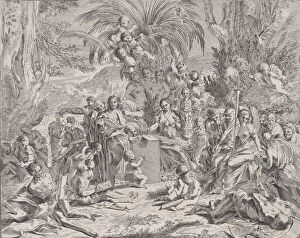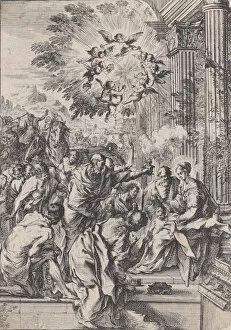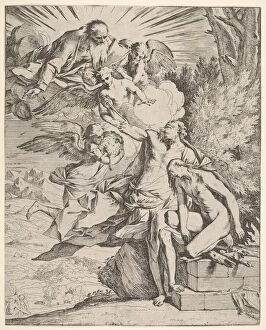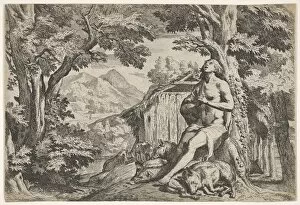Testa Pietro Collection (page 2)
"Testa Pietro: Exploring the Depths of Human Emotion and Mythological Tales" Step into the captivating world of Testa Pietro
All Professionally Made to Order for Quick Shipping
"Testa Pietro: Exploring the Depths of Human Emotion and Mythological Tales" Step into the captivating world of Testa Pietro, a talented artist who skillfully brings to life ancient tales and allegories through his masterful works. In "Achilles dragging the body of Hector around the walls of Troy, " created between 1648-50, Testa captures the raw intensity and brutality of war, immersing us in a scene that echoes with both triumph and tragedy. Moving on to "The suicide of Dido, " dating from 1650-55, we witness Testa's ability to convey profound sorrow as Dido reclines on a pyre surrounded by numerous figures. The composition evokes a sense of despair and loss that resonates deeply within our souls. In another masterpiece titled "An allegory of rest on the flight into Egypt, " also from 1650-55, Testa transports us to a serene moment amidst chaos. This work showcases his talent for creating harmonious compositions filled with symbolism and hidden meanings. "The education of Achilles" further demonstrates Testa's versatility as an artist. Painted during the same period as previous works, this piece reveals his keen eye for detail while depicting an important mythological event with great finesse. Amongst these remarkable creations is also "Study for a pendentive depicting Justice and Charity. " Dating back to 1630-50, this artwork exemplifies Testa's exploration of moral themes through intricate designs that captivate our imagination. Venturing beyond just his own works, we encounter Girolamo Pedrignani's depiction of Saint Sebastian being tied to a tree. Though not directly created by Pietro himself, it serves as evidence that his influence extended beyond personal creations alone. Furthermore, Francois Collignon's "An allegory of painting" pays homage to artistic expression itself while showcasing how artists like Pietro inspired others throughout the 17th century.

